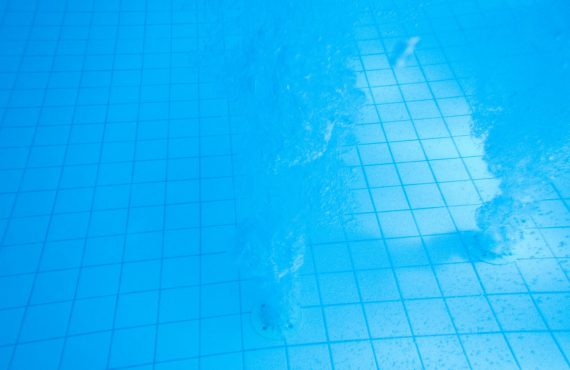By:
Marianna Kern Grachek, MSN, RN, NHA, FACHCA, CDONA, FACDONNA
ACHCA Retired Emeritus Certified
Section 6102(c) of the Affordable Care Act required that all skilled nursing centers develop Quality Assurance and Performance Improvement (QAPI) programs. The QAPI requirements were included in the Centers for Medicare and Medicaid Services’ (CMS) revised Requirements of Participation (RoP) for nursing centers, published in October 2016. The stated purpose and intent of the QAPI regulations is to “develop, implement, and maintain an effective comprehensive, data-driven QAPI program that focuses on systems of care, outcomes of care, and quality of life.”
This new provision significantly expands the level and scope of QAPI activities required at §483.75(a): Quality Assurance and Performance Improvement program must ensure that facilities continuously identify and correct quality deficiencies as well as sustain performance improvement.
The QAPI requirements have three enforcement phases (I- November 2016 the QAPI Committee, II- November 2017 to develop and submit to the Survey Agency a QAPI Plan – and III-November, 2019 to implement the QAPI plan).
The leadership charge to the LTC facility interdisciplinary team (IDT) is to coalesce around the facility QAPI Program and to foster a culture that openly integrates monitoring, reporting, and implementing performance improvement efforts into Facility Quality Assessment and Assurance Committee activities. To do so, the IDT must be knowledgeable about the Five Elements of QAPI:
(1)
- Design and Scope – The QAPI program must be ongoing, comprehensive, and deal with the full range of services offered by the facility, and include all departments.
- Governance and Leadership- The leadership leads the program, involves staff, residents and families; and assures QAPI is adequately resourced including a champion for QAPI.
- Feedback, Data Systems and Monitoring- The facility puts in place systems to monitor care and services, drawing data from multiple sources. Feedback systems incorporate input from staff, residents, and families.
- Systematic Analysis and Systemic Action- The facility uses a systematic approach to fully understand a problem, its causes, and implications of a change (e.g. Root Cause Analysis) and to prevent future events.
- Performance Improvement Projects (PIPs)- PIPs examine and improve care or services needing attention and involves gathering information systematically to clarify issues or problems, and intervening for improvement.
Key to engaging the interdisciplinary team around the program is their understanding of the integration and balance between top-down vs. a bottom-up leadership:
• Top down leadership includes the governing body and/or executive leadership who are legally responsible and accountable for operations of the facility. They set the vision and ensure the QAPI program is defined, implemented, and maintained to address identified priorities. They: set goals; ensure adequate resources, including staff time, equipment, and technical training needed to achieve goals; remove barriers to accomplishing goals; reward success and hard work.(2) Top down leadership ensure that the QAPI program is sustained during transitions, define QAA/QAPI committee responsibilities and activities, and how the committee will conduct the activities necessary to identify and correct quality deficiencies.
• Bottom-up leadership, empowers staff, allow the staff to figure out how to accomplish goals, and supports staff in implementing tools.(2)
Staff is educated to focus on quality issues that affect the most people and have the higher likelihood of harm. A Performance Improvement Project (PIP team), chartered to advance improvement, is comprised of multidisciplinary staff who are directly involved in the issue needing attention. They are: taught to use the PDSA (plan-do- study- act) cycle for process improvement, oriented to team building skills, and provided tools for assessing, analyzing, and reporting findings.(3) A PIP charter provides direction and scope to each QAPI project and reports back to the facility team.
The IDT is ideally suited to deal with clinically focused PIPs. They are able to drill down and conduct a Root Cause analysis of the problem to identify competing and underlying issues. The IDT is closest to the policies, procedures, resources, work environment and flow to best evaluate systems such as those that impact rehospitalization or the use of antipsychotics. Additionally, the IDT can balance technical vs adaptive changes. Technical changes work best when adaptive changes (attitudes knowledge and skill) are adopted by staff. Creating a new form must be balanced with workflow redesign to be effective.
Leadership relies on staff to design and test new strategies for successful implementation. The IDT naturally facilitates learning from and collaborating with peers, fostering adaptive change, and then evaluating results for sustained effectiveness. Leadership is best served when they engage and empower staff in creating change and letting them design how new programs or processes will be implemented.
The time spent by the IDT to work on projects through PIPs and huddles, while learning from mistakes, is key to the facility’s continuous growth and sustained performance improvement.
Resources:
(1.) http://go.cms.gov/Nhqapi
(2.) AHCA/NCAL, QAPI: New Program or what we do every day? David Gifford, MD MPH, 2013
(3.) http://www.medline.com/media/mkt/pdf/ProvidigmQAPIToolkit.pdf
https://www.cms.gov/Medicare/Provider-Enrollment-and-ertification/QAPI/qapidefinition.html















































